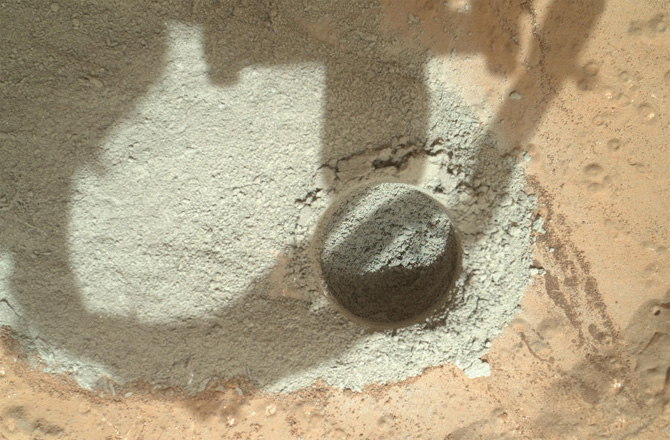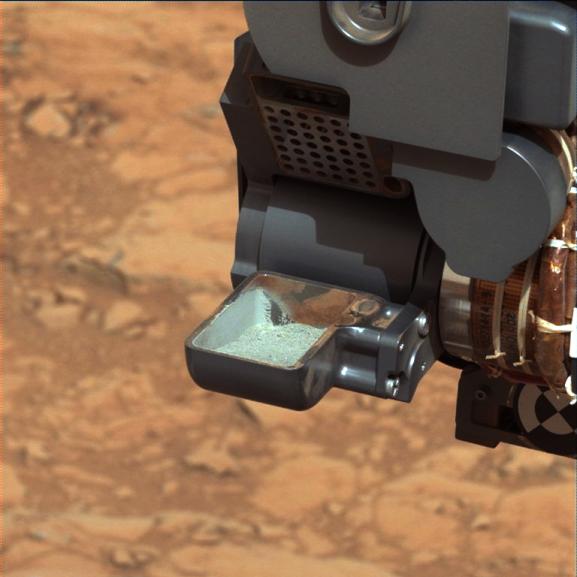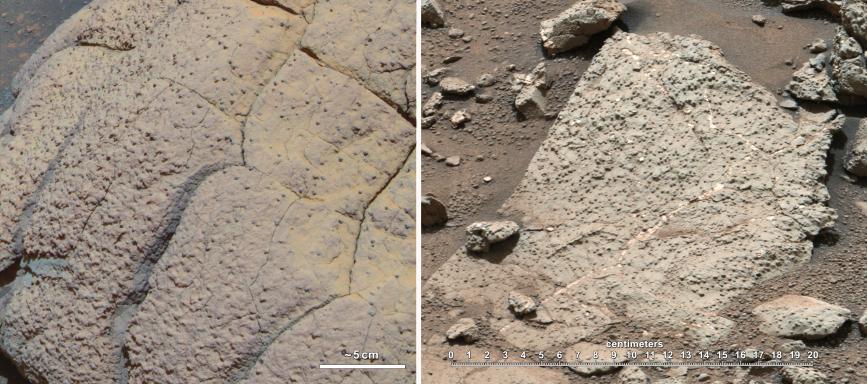NASA's Curiosity Rover Finds Conditions Once Suited For Life On Mars

NASA's Curisoity Rover has discovered evidence that Mars had the conditions necessary to support life. An analysis of a rock sample collected by Curiosity shows the red planet could have supported living microbes in its history.
Scientists identified sulfur, nitrogen, hydrogen, oxygen, phosphorus and carbon -- some of the key chemical ingredients for life -- in the powder Curiosity drilled out of a sedimentary rock near an ancient stream bed in Gale Crater on the Red Planet last month.
"A fundamental question for this mission is whether Mars could have supported a habitable environment," said Michael Meyer, lead scientist for NASA's Mars Exploration Program at the agency's headquarters in Washington. "From what we know now, the answer is yes."
 The data returned by Curiosity's Sample Analysis at Mars (SAM) and Chemistry and Mineralogy (CheMin) instruments, indicate the Yellowknife Bay area was the end of an ancient river system or an intermittently wet lake bed. This could have provided chemical energy and other favourable conditions for microbes. The rock collected is made up of a fine grain mudstone containing clay minerals and other chemicals.
The data returned by Curiosity's Sample Analysis at Mars (SAM) and Chemistry and Mineralogy (CheMin) instruments, indicate the Yellowknife Bay area was the end of an ancient river system or an intermittently wet lake bed. This could have provided chemical energy and other favourable conditions for microbes. The rock collected is made up of a fine grain mudstone containing clay minerals and other chemicals.
The ancient wet environment, ulike some others on Mars, was not oxidizing, acidic, or extremely salty. Simply put, Mars was habitable at some point in the planet's history.
The patch of bedrock where Curiosity drilled for its first sample lies in an ancient network of stream channels descending from the rim of Gale Crater. The bedrock also is fine-grained mudstone and shows evidence of multiple periods of wet conditions, including nodules and veins.
"Clay minerals make up at least 20 percent of the composition of this sample," said David Blake, principal investigator for the CheMin instrument at NASA's Ames Research Center in Moffett Field, Calif.
These clay minerals are a product of the reaction of relatively fresh water with igneous minerals, such as olivine, also present in the sediment. The presence of this reaction, among the calcium sulfate provides evidence of running water and life. Rather surprisingly, though, was the presence of partial oxidation in the sample, hinted at when the drill cuttings were revealed to be grey rather than red.

"The range of chemical ingredients we have identified in the sample is impressive, and it suggests pairings such as sulfates and sulfides that indicate a possible chemical energy source for micro-organisms," said Paul Mahaffy, principal investigator of the SAM suite of instruments at NASA's Goddard Space Flight Center in Greenbelt, Md.
An additional drilled sample will be used to help confirm these results for several of the trace gases analyzed by the SAM instrument. Scientists plan to work with Curiosity in the Yellowknife Bay area for many more weeks before beginning a long drive to Gale Crater's central mound, Mount Sharp. Investigating the stack of layers exposed on Mount Sharp, where clay minerals and sulfate minerals have been identified from orbit, may add information about the duration and diversity of habitable conditions.
Source: NASA

